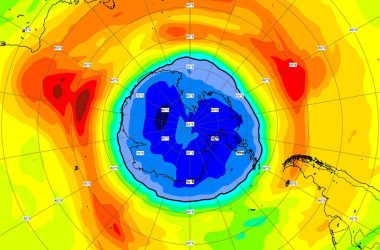Melting icebergs in Antarctica in 2023
Sebnem Coskun/Anadolu Agency via Getty Images
The level of the oceans may have been higher than it is currently between 4000 and 8000 years ago. Understanding the ancient climate conditions that led to those higher sea levels could help in predicting how climate change will impact sea levels in the future.
According to Roger Creel, a researcher at Columbia University in New York, there have been three periods in Earth’s recent geologic history when the climate was somewhat similar to the present. The most recent of these occurred around the middle of the Holocene Epoch…
We have clarified when past average sea levels during the Holocene were most likely to have been highest, the type of measurements used to estimate past relative sea levels, and why Antarctic ice may have been less extensive than it is today.
Understanding Past Climate Conditions
The Holocene Epoch, which began approximately 11,700 years ago after the last major ice age, saw relatively stable climatic conditions. During the middle of the Holocene, around 4000 to 8000 years ago, research indicates that the global sea levels were potentially higher than today.
Roger Creel and his team found three periods with climate patterns comparable to our current state. The most recent of these periods was characterized by higher global temperatures and less extensive Antarctic ice coverage. Studying these historical patterns provides invaluable insights for our understanding of how current and future climate changes might impact sea levels.
Measuring Past Sea Levels
The data about past sea levels was derived from various geological markers. Scientists used techniques like radiocarbon dating and analysis of sediment layers to measure past relative sea levels. These measurements are often taken from ancient coral reefs, salt marshes, and lagoons, which can provide a record of sea level changes over thousands of years.
Moreover, fossilized microorganisms, known as foraminifera, can also offer clues about past sea levels. By analyzing the species of foraminifera in different sediment layers, scientists can deduce the relative sea level at the time the sediment was deposited.
The Role of Antarctic Ice
The mid-Holocene Epoch, characterized by higher sea levels, was also a period when the Antarctic ice was potentially less extensive than today. Why is this the case? Warmer global temperatures during this period likely contributed to increased melting of the Antarctic ice sheets, which in turn would have contributed to the rise in sea level.
It’s important to understand that the Antarctic ice sheet plays a vital role in global sea level changes. It is the largest ice mass on Earth, and if it were to melt completely, it would raise global sea levels by about 58 meters (190 feet). Therefore, even small changes in the extent of the Antarctic ice can have significant impacts on global sea levels.
Implications for the Future
Understanding these past climatic conditions is crucial in predicting future sea level changes in response to climate change. By studying the middle of the Holocene Epoch, we can model potential future scenarios based on how our climate reacted in the past.
However, it’s important to note that while the past can guide us, the rapid pace and scale of current anthropogenic (human-caused) climate change are unprecedented. Therefore, these predictions need to be considered with caution. Mitigation and adaptation strategies must be employed to manage the risks associated with rising sea levels, which pose a major threat to coastal cities worldwide.












